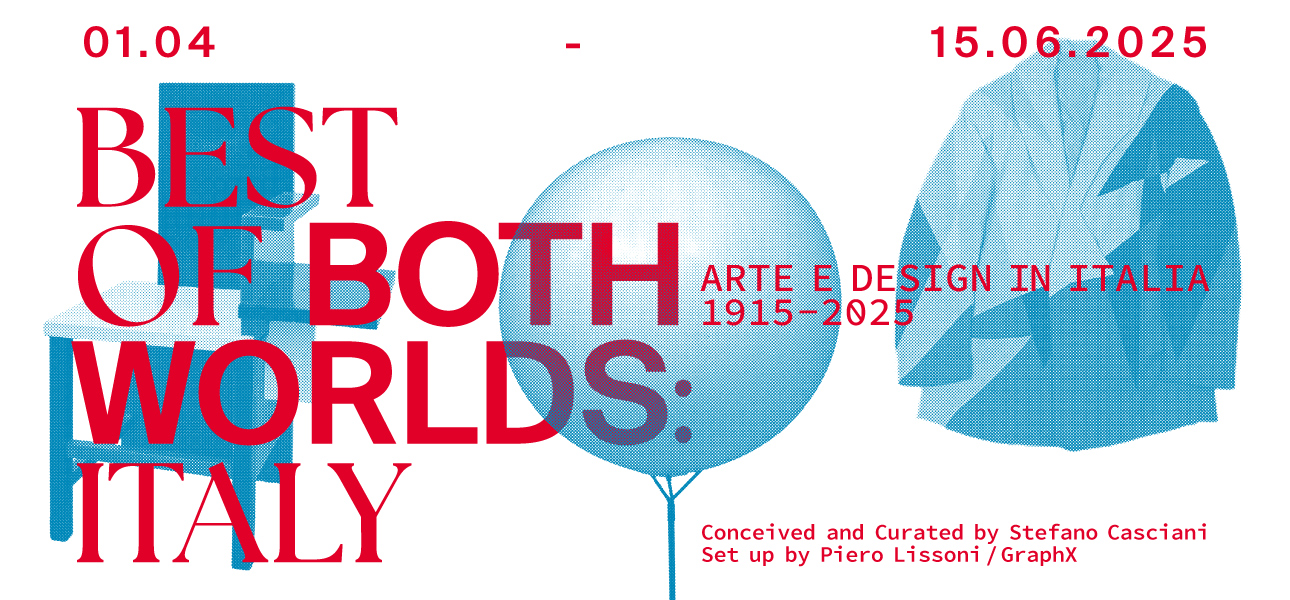Concept
Through its relentless research, projects, and products, Italian design has, over the past century, given life to an imaginative universe—an autonomous system of objects that anticipates and shapes the “aesthetic society” in which we live today. Its prestige, both commercial and critical, represents a cornerstone of the national economy, positioning itself as one of the most fascinating cultural territories for an international audience.
This distinctive synergy between designers, artists, and industry finds expression in the exhibition Best of Both Worlds: ITALY. Art and Design in Italy 1915 – 2025 and in the accompanying editorial work, strongly highlighting the energy and romantic motivation that have always driven Italian design: the improvement of the human condition through the harmonious fusion of functionality and aesthetics.
Conceived and curated by writer and designer Stefano Casciani, with exhibition and graphic design by Piero Lissoni/GraphX, the exhibition aims to narrate and celebrate this journey, emphasizing the deep connection that Italian design maintains not only with social and economic dynamics but also with disciplines such as literature, craftsmanship, and, above all, the visual, plastic, and multimedia arts. This heritage has evolved over time, adapting to the industrial context with an inimitable sensitivity.
In Italy, the focus on the interconnection between expressive forms has fostered a prolific production in which research, creativity, and functional efficiency intertwine harmoniously. However, criticism and historiography have often overlooked the complex relationship between design and the industrial world. The exhibition, therefore, seeks to explore how the cosmopolitan culture of design has found, and continues to find, one of its most significant moments in Italy, facing the challenges of mass production and the market—from the years of the economic boom to the crises of postmodernity—through its dialogue with artistic culture.
Among the exhibition’s highlights are previously unseen materials—both written and visual—that reveal the design thinking behind Italian design and its ongoing dialogue with art. To reinforce the connection with the present, the Thematic Areas are dedicated to the authors who have worked and continue to work at the intersection of art and design, renewing this extraordinary tradition for contemporary audiences.
The exhibition unfolds as a narrative through the decisive epochs of Italian design, from the fervor of Futurism to its expression in the industrial context, with key figures such as Mollino, Munari, and Mari. It moves through Joe Colombo’s Pop era, then arrives at the radical movements and the “Art Design” movement promoted by Mendini, Alchimia, Sottsass, and the Memphis group, exploring the relationship between art, fashion, and independent design. The analysis continues with the evolution of design in the digital age and its most recent “sculptural” vocation in the individual research of authors such as Gaetano Pesce and Nathalie Du Pasquier, opening a reflection on the new horizons of contemporary imagery and objects. The various sections of the exhibition connect crucial themes for the reinvention of the object, from abstractionism to neo-modernism, up to the recent trend of low-cost collecting.








